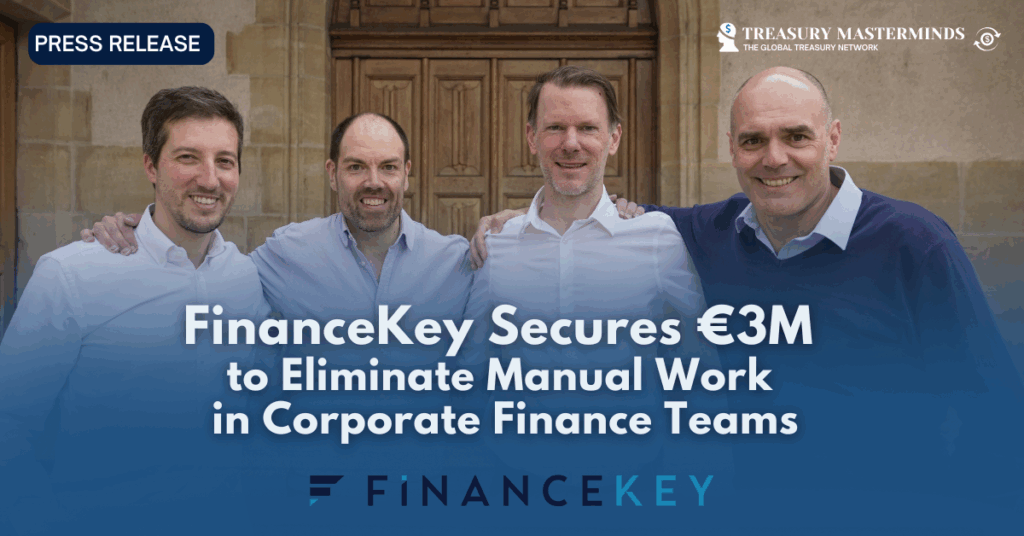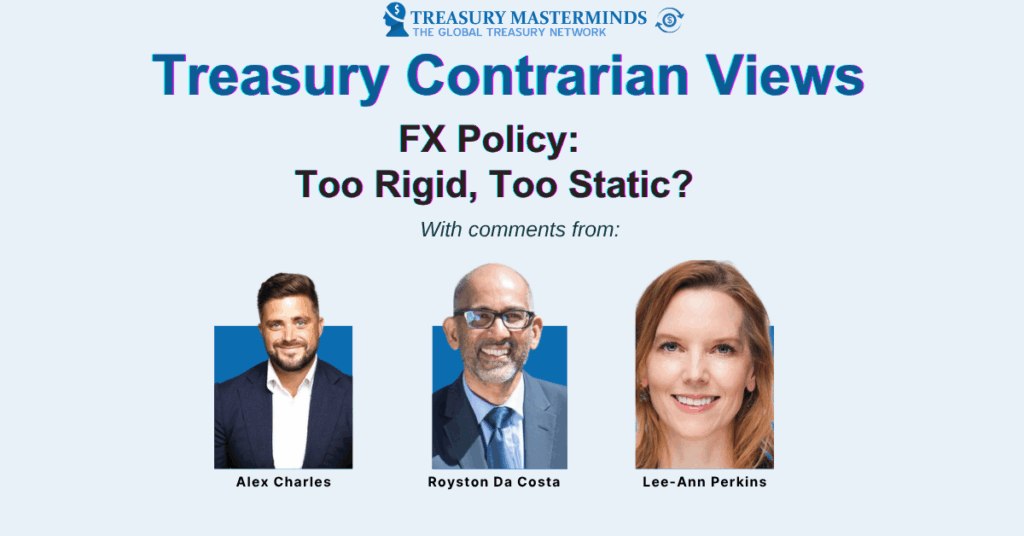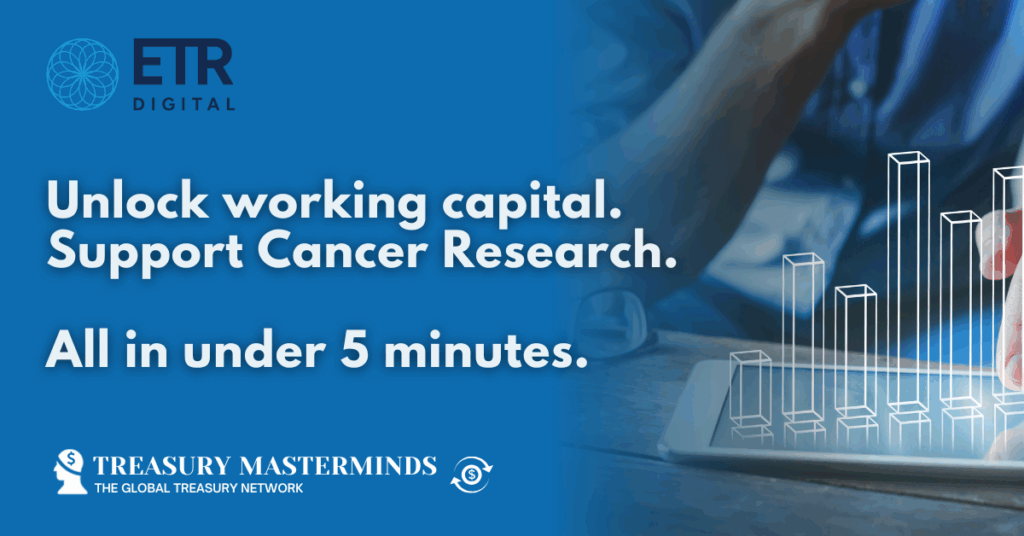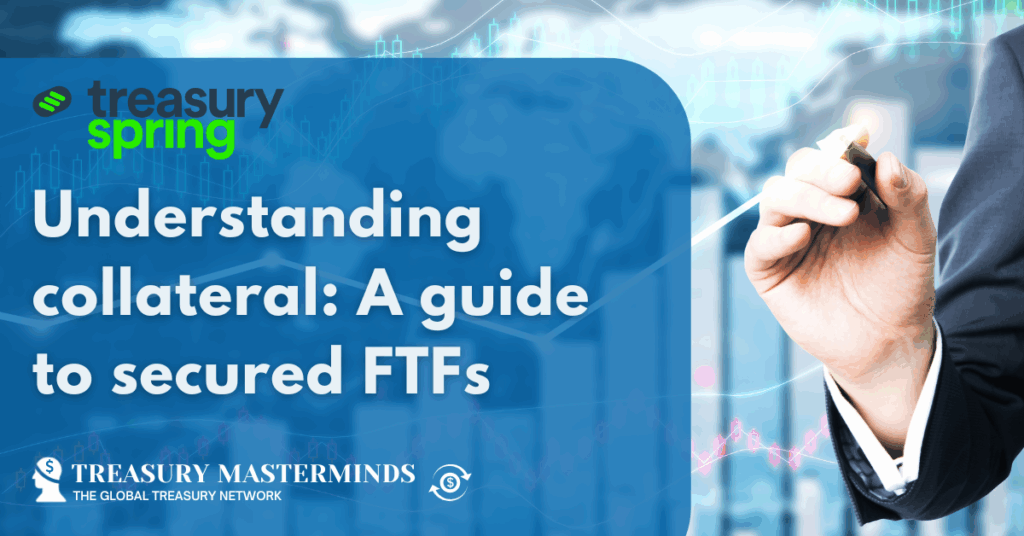
FinanceKey Secures €3M to Eliminate Manual Work in Corporate Finance Teams
Helsinki, FINLAND – June 10, 2025 – Finnish fintech company FinanceKey announces a new €3 million seed funding round to scale its client base, expand into new markets, and accelerate the shift to fully automated enterprise treasury systems. The round was led by Maki.vc, a Helsinki-based early-stage venture capital firm, with participation from existing investor First Fellow Partners. Many large enterprises still struggle with outdated tools, fragmented systems, and spreadsheet-heavy workflows. In fact, treasury and finance professionals in large companies spend the majority of their time on low-value tasks like reconciliations, payment execution, and bank integrations. Without a clear, real-time view of cash across accounts and entities, finance teams struggle to manage liquidity, forecast accurately, or respond confidently to shifting market conditions. FinanceKey offers a fundamentally different approach: a single, streamlined platform that connects banking, ERP, and treasury systems, standardizes financial data, and fully automates payment processes. It delivers real-time visibility, automation, and control in one unified platform. The solution streamlines global treasury operations, reduces manual workload, and enables finance teams to operate with precision and agility. Designed for flexibility, the platform can be used as a standalone dashboard or integrated seamlessly into existing systems, with no custom development required. FinanceKey is tapping into a major shift: finance teams are no longer just back-office operators but strategic powerhouses. The company was founded by former Nokia treasury leaders Veikko Koski, Macer Skeels, Tiago Batista, and Rony Meyer, who experienced firsthand the limitations of legacy treasury tools and set out to build a system designed for the speed and scale of modern finance teams. With over €1.5 billion in payments automated to date and steady month-over-month growth, FinanceKey is already used by multinational clients including Nors, Bravedo, and Obton, who have reported up to €1 million in annual savings through payment automation in the first year. The global treasury management software market is projected to reach over €10 billion by 2030, with broader financial operations and embedded finance platforms pushing the total opportunity beyond €100 billion. The new funding will power FinanceKey’s product development, team growth, and expansion across Europe, while accelerating FinanceKey’s mission to transform the global treasury infrastructure. “We’ve seen firsthand how disconnected systems and repetitive manual workflows slow finance teams down; they deserve better tools – ones that unify fragmented data, automate workflows, and free them to focus on strategic decisions. This funding lets us scale a platform already driving results for top-tier enterprise clients,” said Veikko Koski, CEO of FinanceKey. “Treasury teams are turning to FinanceKey because we’re not just patching over old problems – we’re tearing up the rulebook,” said Macer Skeels, CTO and co-founder of FinanceKey. “We’re reimagining how treasury works, with a platform that lets teams move faster, adapt freely, and evolve without limits.” “With FinanceKey, we finally have real-time visibility across our global accounts and a solution tailored to each region’s complexity. Within months, we replaced a fragmented, manual Excel process involving 20 people with a streamlined, automated system. The savings achieved through the group’s treasury management using this tool far exceeded our expectations. FinanceKey isn’t just a vendor, they’re a partner helping us shape the future of treasury”, said Tiago Prista, Head of Finance, Nors Group. “The team at FinanceKey has deep expertise and has created a product that solves a clear, urgent need in the market,” said Tim Bolte, Venture Partner at Maki.vc. “The traction they’ve achieved with large enterprises speaks volumes, and this is just the beginning.” “FinanceKey is building the kind of infrastructure every treasury team wishes they had, clean, reliable and easy to integrate,” said Kim Groop, Partner at First Fellow Partners. “They’re not just adding a layer of visibility; they’re simplifying the entire treasury backbone.” About FinanceKeyFinanceKey is a real-time cash management platform that helps companies gain visibility, automate payments and simplify treasury operations. Founded by former Nokia treasury leaders, the platform consolidates financial data into one accurate, actionable view – giving finance teams the clarity and control they need to move faster.financekey.com About Maki.vcMaki.vc is a Helsinki-based pre-seed and seed-stage venture capital firm that champions the entrepreneurs who rewrite the future. The fund invests in deep tech and brand-driven companies across consumer and enterprise spaces. Maki.vc’s team and global network share the vision of entrepreneurs as champions and challengers, drawing on the experience of scaling some of the strongest technology companies in the Nordics.maki.vc Media ContactAlex CannonHead of GrowthFinanceKey+34 603 566 965alex.cannon@financekey.com

Pix Reinvents Recurring Payments — and Corporate Treasurers Take Note
From Treasury Masterminds Brazil’s central bank is rolling out Pix Automático on June 16, 2025, a recurring-payments feature for the ultra‑popular Pix instant‑payment system. Since Pix launched in late 2020, it has outpaced cash, debit, and credit cards—handling over 26 trillion reais (~US $4.6 trillion) in transactions in 2024. Now, with Pix Automático, Brazilian consumers can authorize everything from utility bills and gym memberships to digital subscriptions with a single one‑time consent Analysts forecast that this could channel at least US $30 billion in e‑commerce payments over the next two years. It also represents a big win for financial inclusion: roughly 60 million Brazilians without credit cards can now tap into subscription‑based services A European Counterpart: Wero Steps In In Europe, the Wero digital‑wallet initiative—developed by the European Payments Initiative (EPI)—is positioning itself as a unified, sovereign alternative to US‑dominated payment networks Launched in July 2024 in Germany, it quickly expanded to France and Belgium, and is entering the Netherlands in 2025 While Pix is already offering recurring payments, Wero currently supports only person‑to‑person (P2P) transfers via phone numbers or QR codes. It plans to support subscriptions, e‑commerce, and POS payments through 2026–2027. Thus, Pix leads in recurring payment capabilities—but Wero is steadily catching up, with an eye on European unity and financial autonomy Competitive Positioning: Pix vs. Wero Feature Pix Automático (Brazil) Wero (Europe) Live Date June 16, 2025 Rolled out P2P mid‑2024; subscriptions in 2025–2026 Recurring Payments Yes Planned for 2025 Integration with businesses Via Pix‑enabled banks & fintechs like PagBrasil Through EPI banks, merchants, Worldline, and Revolut soon Scope Instant‑debit subscriptions P2P now → subscriptions/e‑commerce next Coverage National; expanding internationally Pan‑European rollout Brazil’s centralized approach has enabled Pix to move faster and capture full recurring‑payment coverage. Wero is building its capabilities through a coalition of banks and fintechs, aiming for cross‑border scale. What Corporate Treasurers Should Know 1. Lower friction in collections For Brazilian firms—especially SaaS, utilities, and subscription‑based businesses—Pix Automático simplifies recurring billing dramatically. No more “boletos” or complex direct‑debit arrangements; just one upfront consent. 2. Enhanced cash flow predictability Automated debits help reduce payment delays and defaults—crucial for forecasting liquidity. According to industry estimates, recurring payments via Pix could increase collection volumes by up to 30% versus one‑off slips or QR codes 3. Better inclusivity Brazilian companies can now serve nearly 60 million consumers who lack credit cards but can use Pix—expanding market reach significantly . 4. European treasury analogies European treasurers should monitor Wero’s rollout. While some banks and partners like Revolut and Worldline are already integrating Wero for P2P and e‑commerce recurring payments aren’t live yet. But when they arrive, Europe’s treasurers may face similar options and benefits. 5. Strategic advantage & resilience For multinationals operating in both regions, tie‑ins with Pix and Wero can reduce reliance on global card networks and cut cross‑border payment costs. In Brazil, Pix is already a third‑party‑free system; in Europe, Wero is the stepping stone to greater payment sovereignty. Outlook: Already Ahead—or Close Behind Corporate treasurers should: In payment innovation, Pix has sprinted ahead—and Wero, though a late entrant, is coming in strong. Smart treasurers will track both closely. Also Read Join our Treasury Community Treasury Mastermind is a community of professionals working in treasury management or those interested in learning more about various topics related to treasury management, including cash management, foreign exchange management, and payments. To register and connect with Treasury professionals, click [HERE] or fill out the form below to get more information. Notice: JavaScript is required for this content.

The Digital Transformation of Treasury: From Static Reports to Dynamic Insights
This article is written by Treasury4 The treasury function has historically been defined by static reporting—in other words, periodic snapshots of financial data that offer a backward-looking view of an organization’s financial health. Digital transformation of treasury is inevitable in this day and age. Businesses are grappling with volatility, regulatory shifts, and globalization, making static reports an outdated tool in an increasingly dynamic world. To meet these challenges, treasury teams are moving toward dynamic, real-time insights that empower proactive decision-making. This shift is being driven by digital transformation and the adoption of treasury management systems (TMS) such as Treasury4, which provide the tools needed for high-growth companies to gather deeper, more useful data. In this article, we’ll examine the downsides of static reporting in a modern treasury environment, why dynamic data is critical for strategic decision-making, and how modern tools are supporting treasurers in gathering these insights. The Limitations of Static Reporting in Treasury Management Static reporting is characterized by fixed, periodic financial reports—typically gathered manually from separate sources. While this method has been the backbone of treasury for decades, its shortcomings are becoming increasingly apparent: What is digital transformation of treasury? The transition away from traditional static reporting to dynamic financial insights represents a major step forward in treasury operations. Instead of fixed, historical data, dynamic insights provide real-time, actionable data that treasury teams can use to respond to changes as they happen. Key features of dynamic insights include: Key Benefits of Digital Transformation for Treasury Teams Transitioning from static reporting to dynamic insights offers several significant benefits, including: Dynamic insights can combat unforeseen risks by providing a detailed view of liquidity positions, currency exposures, and counterparty risks. This heightened visibility enables proactive risk management, reducing the likelihood of major fallout. The Role of Treasury Management Systems (TMS) in Enabling Digital Transformation Modern treasury management systems are the cornerstone of dynamic financial insights. They consolidate data from multiple sources, automate workflows, and provide advanced analytics capabilities. Modern TMS can provide: Steps to Transition from Static to Dynamic Reporting Shifting from static reports to dynamic insights requires a structured approach. Consider these steps to make the process easier: The Future of Treasury Lies in Dynamic Insights The evolution from static reports to dynamic insights is more than a technological upgrade—it’s a strategic paradigm shift. As businesses face increasing complexity and uncertainty, the ability to adapt quickly and confidently will determine success. Dynamic insights offer a level of visibility and agility that static reports simply cannot match. By embracing digital transformation and leveraging tools like Treasury4, treasury teams can unlock greater efficiency, mitigate risks, and drive strategic decision-making. The future of treasury lies in its ability to harness the power of real-time data. Organizations that prioritize this shift are not just keeping pace with the times—they’re setting themselves up for long-term success. Also Read Join our Treasury Community Treasury Masterminds is a community of professionals working in treasury management or those interested in learning more about various topics related to treasury management, including cash management, foreign exchange management, and payments. To register and connect with Treasury professionals, click [HERE] or fill out the form below. Notice: JavaScript is required for this content.

The FX Valuation Trap: How to Avoid Audit Issues When Hedging
This article is a contribution from our content partner, Bracket There was a time when valuing FX contracts was easy for most mid-sized corporates: a quick call to your bank, a spreadsheet entry, job done. But that era’s gone – and today, independence matters more than ever. For a growing number of finance leaders, FX valuations are becoming one of the hardest areas to defend at audit – not because the numbers are necessarily wrong (or hopefully not!), but because the process behind them no longer holds up. Alongside initiatives like the FX Global Code, auditors are raising the bar. Simply pointing to a hedging policy and saying “we followed it” won’t wash anymore. Not if you want to qualify for hedge accounting treatment. Instead, audit teams want to see how trades were priced, valuations were confirmed, and execution decisions were justified – ideally with documentation and independent validation. So, where is it going wrong? When ‘good enough’ no longer cuts it Valuations (the fair value of your forwards, options, swaps, or large spot positions etc.) directly impact your P&L, balance sheet, and hedge accounting. Conceptually it sounds simple: what is this contract worth today? But in practice, it’s rarely that clear. Many corporates still rely on valuations from the same banks that sold them the trade. Sure, that’s convenient. But these marks typically lack transparency and any form of external validation. That’s becoming an audit red flag – especially for structured trades, where the pricing model can’t easily be explained or tested. Increasingly, auditors want to see valuation processes that are: Expectations for more frequent FX valuation checks are also rising – with quarterly marks becoming the bare minimum[1]. [1] https://www.sciencedirect.com/science/article/abs/pii/S027842542400019X Not a burden but an opportunity Do I need an independent valuation for every FX trade or hedge? No. Start with what’s material – large exposures, complex instruments, or anything with a visible impact on your numbers. Spot-checking can be sufficient to uncover trends. Do we need to benchmark daily? Not unless you want to! Daily valuations may become standard for highly structured portfolios, but many corporates begin with monthly or quarterly checks, focusing on transparency and reproducibility. Will this help with hedge accounting? Yes. Independent valuations provide stronger, more auditable evidence for effectiveness testing – a key requirement under IFRS 9. This can help prevent restatements and support more stable reporting. How do we explain this to the board or audit committee? Many audit committees are already asking, “How do we know this number is fair?” Being able to say, “we independently benchmark our largest exposures and document the methodology” is often enough to inspire confidence. Where should we start? Pick one recent FX trade – preferably a larger forward – and run an independent benchmark against it. Comparing that result with what was booked is a great first step. How much time or budget does this take? Far less than you might expect. Independent FX valuations can be layered onto existing processes – often without any system changes or significant cost. Need independent FX valuations – without the audit headache? Bracket’s tools provide accurate, market-driven FX valuations across your portfolio with transparent methodologies and audit-ready reports, so you can: Also Read Join our Treasury Community Treasury Mastermind is a community of professionals working in treasury management or those interested in learning more about various topics related to treasury management, including cash management, foreign exchange management, and payments. To register and connect with Treasury professionals, click [HERE] or fill out the form below to get more information. Notice: JavaScript is required for this content.

Treasury Contrarian View: FX Policy — Too Rigid, Too Static?
Foreign exchange (FX) policies are a cornerstone of corporate treasury. They define how exposures are identified, measured, and hedged. But here’s the contrarian question: Are most FX policies too rigid, too static—and ultimately too disconnected from business reality to be effective? Should treasury rethink how these policies are designed and applied? The Case for Rethinking FX Policy Design The Case for Structure and Discipline Toward a More Adaptive FX Policy Rather than choosing between rigid policy or total flexibility, companies can aim for: Let’s Discuss We’ll be gathering views from treasurers, FX strategists, and policy architects—share your experience and thoughts! COMMENTS Alex Charles, Co-founder Bracket, comments: As someone who’s worked with over a thousand CFOs and treasurers during my time managing FX strategies, I’ve seen just about every kind of hedging policy out there , the good, the bad, and the ones that raise more questions than they answer. Now at Bracket (www.bracket.co.uk), we’re building tools that help corporates manage FX risk with more clarity and control but it’s still clear that the foundation is policy. The best FX policies I’ve seen strike the right balance , they’re concrete enough to offer governance and clarity (often board-approved, with defined hedge ratios and a layered approach), but built with just enough flexibility to react to market moves. A great example I’ve seen is a layered hedging strategy where Q1 is hedged at 80%, Q2 at 60%, Q3 at 40%, and Q4 at 20%, with the intention of topping up quarterly to meet those targets. If the market moves materially ,lets say, 5% above the budget rate it triggers a policy-led conversation with the board. The company might then top up that quarter’s hedges by another 20% to lock in gains. It’s still disciplined, still within policy but adaptive enough to respond to real world volatility (a tweet from Trump) Too rigid, and you miss opportunities. Too loose, and you lose control. Getting that balance right is where I have seen the best results. Royston Da Costa, Treasury Masterminds Board Member, comments: An effective FX (Foreign Exchange) Treasury Policy sets the framework for how an organization manages its currency risk, ensuring financial stability and compliance with governance standards. I have listed below an outline of the main points typically included in an FX Treasury Policy: 1. Purpose and Scope 2. Governance and Responsibilities 3. FX Risk Identification and Measurement 4. FX Risk Management Strategy 5. Dealing and Execution 6. Accounting and Reporting 7. Compliance and Controls 8. Review and Updates Lee-Ann Perkins, Treasury Masterminds Board Member, comments: Governance & Controls Reporting & Review Treasury KPIs Also Read Join our Treasury Community Treasury Mastermind is a community of professionals working in treasury management or those interested in learning more about various topics related to treasury management, including cash management, foreign exchange management, and payments. To register and connect with Treasury professionals, click [HERE] or fill out the form below to get more information. Notice: JavaScript is required for this content.

Cash Conversion Cycle Calculator: Helping Businesses Unlock Trapped Working Capital and Make Trade Cheaper, Faster and Simpler
This article is written by ETR Digital For many businesses, a significant proportion of their working capital is tied up in inefficient or outdated trade processes. And in today’s world, the need to be agile and resilient in pursuit of improved financial performance is essential. The Cash Conversion Cycle Calculator (Calculator) helps businesses identify trapped liquidity and release it by leveraging the financial benefits of digital trade instruments. The Calculator is simple to use, taking just minutes to help corporate treasurers, accountants and finance professionals measure how quickly their business converts its investments in inventory and other resource inputs into cash flow from sales. Highlighting any bottlenecks, it helps them unlock ‘trapped’ cash tied up in inefficient, paper-based or outdated trade processes such as delays in invoicing, payments, and settlement times. By digitalising transactions, in line with the Electronic Trade Documents Act 2023 (ETDA), businesses can significantly reduce these delays, free up significant amounts of working capital, drive operational efficiency, and increase their profitability. The Rt Hon. the Lord Thomas of Cwmgiedd notes: “The ETDA provides the legal foundation for trade digitalisation and the benefits that flow from it. However, the realisation of those benefits can only come when traders actually use digital systems. This tool [the Calculator] is a simple, speedy and helpful aid that will enable traders to make an initial assessment of the benefits that can be realised. I am sure that those who use it will quickly see the benefits and thus contribute to the achievement of the objectives of the Act.” Chris Southworth, Secretary General, ICC UK adds: “One of the most effective, but often overlooked, digital solutions in the treasury and finance toolbox are negotiable instruments. Traditionally, these instruments (e.g. bills of exchange and promissory notes) have been paper-based, but reborn in digital form thanks to the ETDA, they represent a major shift in how businesses transact and manage their financial assets.” Digital negotiable Instruments (DNIs), which are securely recorded on electronic platforms, enable faster, more transparent, and cost-effective transactions. By shortening the cash conversion cycle using digital bills of exchange and digital promissory notes, businesses can accelerate cash inflows and streamline their payment processes, thereby optimising working capital and improving liquidity. This digital approach not only improves the speed of trade and supports ESG goals by eliminating paper, it also reduces the risk of fraud, ensuring that all parties involved in a transaction have secure access to the same information. The Calculator helps a business to assess just how much of its working capital could be unlocked. If the figures indicate that improvements could be made, making contact could be the first step towards improved liquidity and financial performance. Patrick Kunz, Founder of the Interim Treasury Network, Pecunia Treasury & Finance, comments: “Working capital is a big driver of cash for a company. As a treasurer it therefore has my focus. Though I am not in the lead for reducing DSO and/or total CCC, these are interesting metrics to know and calculate. The online tool provided by the IC4DTi and ETR Digital lets me easily calculate these WC metrics. “As an extra, I can also calculate the cash effect of reducing my CCC (i.e. increasing my DPO, reducing DSO). This shows me how it is worth investing into reducing the CCC and the monetary savings it can lead to. All this is then put into a PDF report, which is directly shareable with the CFO. It is an amazing starting point to get a grip on working capital KPIs and the cash effect they can have by improving your CCC (and reducing your working capital).” Our partners at ETR Digital, who developed the Calculator, will kindly donate £5 to our charity of the year – Cancer Research UK – for every business that completes a Calculation cycle and contacts us using a verifiable business email address. The Calculator can be found here. https://ic4dti.org/getting-started-ccc/ Editor’s Note The International Centre for Digital Trade and Innovation (iC4DTI) is an independent, not-for-profit Community Interest Company established to drive the digital transformation of trade on a global scale. It is a partnership which includes five government departments with industry and academia and acts as a global benchmark on how to accelerate the implementation of trade digitalisation in support of the ICC Digital Standards Initiative at the international level. Launched in December 2024, iC4DTI builds on the success of the Centre for Digital Trade and Innovation (C4DTI), which was co-founded in 2022 by ICC United Kingdom, HM Revenue and Customs, Tees Valley Combined Authority and Teesside University. Originally established as a UK-based public–private partnership, the Centre evolved into an international body in response to growing global demand, particularly from emerging economies for guidance, expertise and practical support in modernising trade. ICC United Kingdom is the representative office of the International Chamber of Commerce (ICC) in the UK. ICC is the largest world business organisation, representing 45 million companies, employing over 1 billion people in 170 countries with ICC rules underpinning $17 trillion of world trade. ETR Digital specialises in improving cash conversion cycles for corporations and financial institutions by utilising newly legislated digital negotiable instruments. Their solutions help companies enhance liquidity, reduce operating costs, and improve EBITDA by optimising working capital. ETR Digital also supports clients in improving their credit ratings and complying with IFRS and ESG standards, while offering automation to increase process efficiency by up to 80%. Their technology delivers tangible results with no implementation costs and scalable solutions for global operations. Reporters should contact: ICC United Kingdom – Tom Lane, Thomas Lane tom@thomaslanecomms.com ETR Digital – Dominic Broom CEO, dominic.broom@etr.digital Also Read Join our Treasury Community Treasury Masterminds is a community of professionals working in treasury management or those interested in learning more about various topics related to treasury management, including cash management, foreign exchange management, and payments. To register and connect with Treasury professionals, click [HERE] or fill out the form below. Notice: JavaScript is required for this content.

International Payment Fraud Is Rising — A Wake-Up Call for Corporate Treasurers
A recent Guardian article (link) reveals a troubling new pattern: while domestic fraud in the UK is starting to decline thanks to regulatory changes and reimbursement frameworks, international payment fraud is climbing fast — especially via Authorised Push Payment (APP) scams. According to UK Finance, losses from international APP fraud nearly doubled last year. For treasurers handling high-value, cross-border payments, this isn’t just another warning headline — it’s a call to action. Why Should Treasurers Care? Fraudsters are shifting their focus. With tighter controls and consumer protection now in place for domestic payments, corporate and cross-border flows are the new frontier. Corporate treasury teams — typically responsible for approving or initiating large vendor payments, payroll runs, and intercompany transfers — are increasingly in the firing line. A single fraudulent instruction can cost six or seven figures, and the chances of recovery are slim once funds leave domestic clearing systems. Unlike retail consumers, corporate victims are rarely reimbursed. There are fewer safety nets, especially when payments cross borders. The Risks Lurking in Your Payment Process Some of the most common weaknesses exploited in corporate fraud cases include: These risks increase as treasury departments become leaner and more digital. Automation brings efficiency, but also reduces human checkpoints — giving fraudsters a clearer runway. What Can Treasurers Do? Payment fraud prevention is no longer just an IT or finance operations issue — it’s a treasury concern. Treasurers should consider: One such tool is Verification of Payee (VoP) — a process increasingly used in domestic markets to validate that the account name matches the account number before a payment is executed. While still limited in cross-border coverage, it represents a step in the right direction. Learning More: The Broader Anti-Fraud Landscape VoP is part of a wider conversation around payment fraud prevention. For treasurers interested in exploring these developments, a recent webinar brought together industry experts — including a corporate treasurer and a European CoP (Confirmation of Payee) specialist — to discuss VoP’s role, its limitations, and how it fits into a broader fraud prevention strategy. Register here to join a masterclass about this topic:🎥 Masterclass on VoP and Payment Fraud Final Thought As fraudsters get more sophisticated, so must treasury teams. If your international payments process hasn’t been reviewed in the past 12 months, now is the time. The fraud shift is clear: domestic systems have been tightened. Cross-border payments are now the weak spot. And for treasurers, ignoring that is a risk no risk manager should accept. Also Read Join our Treasury Community Treasury Mastermind is a community of professionals working in treasury management or those interested in learning more about various topics related to treasury management, including cash management, foreign exchange management, and payments. To register and connect with Treasury professionals, click [HERE] or fill out the form below to get more information.

Familiar Treasury Stories -“I thought we had the cash.”
This article is written by Palm These six words can send a chill down any treasurer’s spine. Despite meticulous planning, even the most experienced treasury professionals face unexpected cash flow surprises that threaten to derail operations. This isn’t just about numbers on a spreadsheet—it’s about ensuring your company meets its financial obligations while maintaining strategic flexibility for growth opportunities. Meet Alex, a Modern Treasurer on the Front Line of Liquidity Alex isn’t new to the pressure cooker of treasury operations. As the corporate treasurer of a multinational mid-market firm, Alex is the nerve center for daily liquidity management, cash forecasting, and bank relationships across multiple entities and currencies. Every day demands clarity, speed, and confidence—especially when the stakes are high and the margin for error is razor-thin. Alex’s performance isn’t measured by just reconciling yesterday’s numbers. It’s about forecasting tomorrow’s with precision, spotting unflagged risks before they cascade, and enabling the CFO with insights that go beyond reporting. In a role plagued by disjointed systems, manual processes, and fragmented data, Alex is constantly navigating the thin line between reactive firefighting and strategic foresight. What keeps Alex up at night? Surprises that weren’t in the system. A missed tax payment. A misclassified receivable. An unexpected legal settlement. Each one an operational glitch that could snowball into a financial bottleneck. This story follows Alex’s day—not in an ideal future, but in the real, everyday challenge of trying to run modern treasury with yesterday’s tools. The Hidden Challenge of Modern Treasury Management For treasurers like Alex, cash forecasting isn’t merely a technical exercise—it’s a daily balancing act requiring foresight, cross-functional collaboration, and rapid adaptation when things go sideways. Let’s examine what a typical day looks like when cash forecasting systems fail to deliver the visibility modern treasurers need. Morning Crisis: The Unflagged Tax Payment That Changes Everything Alex’s day begins with a routine check comparing yesterday’s forecast against actual cash movements. Immediately, a problem emerges: a significant tax adjustment has hit the accounts without warning. It wasn’t forecasted—and worse—it wasn’t communicated. The consequences cascade quickly: While Alex manages to avert disaster, the scenario raises crucial questions: Why wasn’t this recurring tax payment automatically flagged? Why must treasurers rely on last-minute updates from other teams? Mid-Morning Reality: When Accounts Receivable Forecasts Meet Reality Later that morning, Alex reviews upcoming cash inflows. The AR forecast looks promising—perhaps too promising. Experience has taught Alex to verify rather than assume. A closer look reveals that three of ten expected invoice payments belong to customers with consistently slower payment cycles. This small but critical insight allows Alex to update the forecast: seven invoices remain as scheduled inflows, while three are marked “likely but uncertain.” This adjustment—blending data with real-world insights—creates a forecast that reflects reality rather than wishful thinking. Afternoon Challenge: Forecasting the Unstructured and Unexpected Even with robust processes, treasurers know that certain events will always exist outside the system. Sudden vendor settlements, severance payments, or legal payouts rarely appear in ERPs or accounting software until it’s too late. These financial surprises typically originate in emails, informal conversations, or departmental meetings—and frequently arrive after decisions have been made. While current forecasting tools excel at processing structured data, they struggle with these contextual, unstructured inputs that often have the greatest impact on cash position. The Collaborative Nature of Effective Cash Forecasting Treasury doesn’t operate in isolation. Accurate forecasting depends on timely inputs from accounts payable, payroll, tax departments, and sales teams. Yet collaboration remains one of the greatest challenges: The solution isn’t just better technology—it’s a fundamentally better approach to treasury collaboration. What Treasury Teams Actually Need: Insights From the Field Through extensive conversations with treasurers across industries, we’ve identified six consistent requirements for effective cash forecasting: 1. Complete Visibility of Unbooked and Recurring Payments “Short-term forecasting is about managing cash position. If you miss a significant payment, your entire day can unravel.” — Amanda, Treasury Lead Modern treasurers need systems that capture both recorded transactions and those still making their way through approval processes. 2. Reality-Based Forecasts Instead of Assumptions “Sales might show bookings in the pipeline, but are those contracts signed or still in negotiation? That distinction makes all the difference for accurate cash forecasting.” — David, Treasury Director Effective forecasting distinguishes between committed, probable, and possible cash movements—providing both clarity and confidence. 3. Flexible Systems That Support Manual Adjustments “You need the flexibility to input one-off items that don’t fit standard categories—otherwise, you’re essentially guessing.” — Tom, Senior Treasury Manager The best forecasting systems combine automation with human oversight, allowing treasurers to apply judgment where it matters most. 4. Transparent Data Sources and Methodology “If I know exactly where my forecast data originates—80% from ERP, 10% manual inputs, 10% machine learning—I trust it more and can explain variances more effectively.” — Lucía, Treasurer Confidence in forecasts comes from understanding how they’re constructed. 5. Context-Aware Automation That Learns “Machine learning that could remind me that March typically means tax payments based on historical patterns—that’s a complete game changer for proactive management.” — Tom, Senior Treasury Manager Intelligent systems that recognize patterns and provide early warnings represent the future of treasury management. 6. Built-In Variance Analysis and Reconciliation “I need to understand why we missed a forecast. That analysis is how we continuously improve our accuracy.” — Every treasury professional we’ve ever spoken with Learning from forecasting misses is as important as the forecast itself. Also Read Join our Treasury Community Treasury Masterminds is a community of professionals working in treasury management or those interested in learning more about various topics related to treasury management, including cash management, foreign exchange management, and payments. To register and connect with Treasury professionals, click [HERE] or fill out the form below. Notice: JavaScript is required for this content.

Understanding collateral: A guide to secured FTFs
This article is a contribution from our content partner, TreasurySpring The repo market: The foundation for secured FTFs The $10 trillion+ repo market is a critical source of short-term funding for banks, allowing them to access liquidity while providing security to lenders. Historically, access to secured funding through the repo market has been limited to large banks and capital markets institutions with billions of assets to invest. TreasurySpring has unlocked this asset class for cash investors who previously had no access, enabling a broader range of businesses to benefit from the additional protection typically offered by secured investments. What’s the difference between a secured and unsecured FTF? TreasurySpring offers a diverse range of Fixed-Term Funds (FTFs) for clients to make cash investments in. Each FTF provides exposure to an underlying investment, such as a Term Deposit, Commercial Paper, Treasury Bills, and other short-term cash investment instruments (Underlying Investments). One category of FTFs involves lending to financial obligors (banks), which can be broken into two main categories: The key distinction is that a secured FTF can offer protection, reducing exposure to obligor credit risk and improving capital preservation. Depending on their risk appetite, FTF investors can choose between unsecured FTFs, which may offer higher yields or collateral-backed secured FTFs, which can provide greater security than equivalent unsecured products. The role of collateral in secured FTFs Collateral is the term used to describe the asset or pool of assets delivered by the obligor (in this case, a bank) as security to protect the lender (in this case, the TreasurySpring cell company in which the FTF is held, and ultimately a cash investor on the TreasurySpring portal). A simple way to understand how collateral works is to compare it to a mortgage. When a bank lends money to a homebuyer, the mortgage is secured against the house—the house serves as collateral for the bank providing the loan. If the borrower defaults, the lender has a claim over the house and can sell it to recover the outstanding loan. The same principle applies to secured FTFs: collateral acts as a safety net, ensuring that if the obligor fails to repay, there should be a pool of assets that can be liquidated to recover the outstanding Underlying Investment. Collateral provided against a secured FTF is monitored and maintained by a neutral third party, known as a tri-party agent—for example, Clearstream—which is intended to ensure transparency and trust. Collateral coverage ratios The collateral coverage ratio represents the value of the collateral relative to the Underlying Investment. A ratio above 100% indicates that the collateral value exceeds the Underlying Investment value. For example, if an investor subscribes £10m into a secured FTF on the TreasurySpring portal that has a collateral coverage ratio of 105%, the obligor (the bank) would need to provide at least £10.5m worth of collateral to the tri-party agent. The collateral is monitored and revalued intraday by the tri-party agent to ensure its value always meets or exceeds the agreed collateral coverage ratio, with additional assets being required from the obligor (the bank) if the value of the collateral decreases in value below an agreed threshold. What assets qualify as eligible collateral? To determine what assets qualify as eligible collateral to secure the Underlying Investment, a collateral schedule is pre-agreed between TreasurySpring and each obligor. These agreements specify factors such as asset type (e.g., debt instruments or equities), country of issuance, and currency denomination. After a client selects an FTF within the TreasurySpring portal, they will see a high-level summary of the relevant collateral schedule, referred to as ‘Collateral Information.’ This provides an overview of the assets that qualify as collateral to secure a particular FTF. It’s important to note that while a collateral schedule may allow for multiple currencies or different types of debt securities, not all of these assets will necessarily be used as collateral. They provide the obligor (the bank) with the flexibility to deliver a mix of collateral assets as long as they remain within the agreed schedule and that the collective value of those assets meets or exceeds the collateral coverage ratio. Conclusion TreasurySpring’s platform provides unique access to secured cash investment options, Secured FTFs, previously unobtainable by most firms. This enables our clients to mitigate risk in their cash investment portfolio and consider returns on a risk-adjusted basis. Secured FTFs can provide significantly better risk-adjusted returns than comparable unsecured options, as the Underlying Investments are backed by collateral. If you’d like to learn more about secured FTFs and their benefits, please don’t hesitate to reach out to a member of the TreasurySpring team. Also Read Join our Treasury Community Treasury Masterminds is a community of professionals working in Treasury Management or those interested in learning more about various topics related to Treasury Management, including Cash Management, Foreign Exchange Management, and Payments. To register and connect with Treasury professionals, click [HERE] or fill out the form below to get more information. Notice: JavaScript is required for this content.